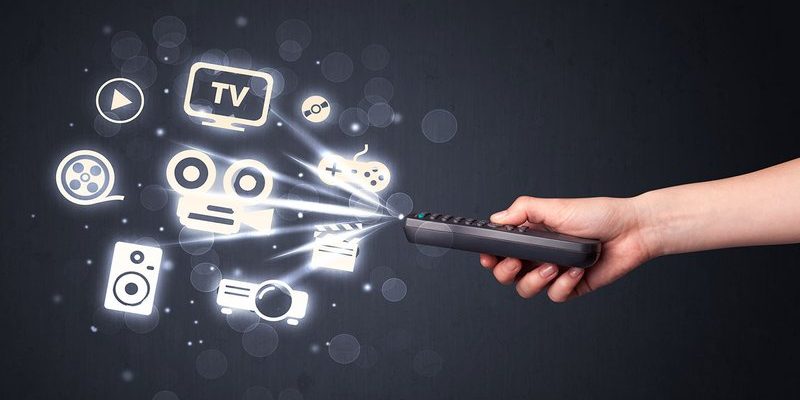
The Ring Smart Remote *looks* like it could be the answer — simple, modern, promising to tie together your smart home. But like a universal remote for your living room, expectations can clash with reality once you start digging into codes, pairing, and what “smart” really means these days.
Let’s untangle it all: how the Ring Smart Remote works, what devices it can actually control, where it shines (or falls short), and how things really play out for beginners. No tech jargon, just a practical look at what’s possible — and what isn’t.
How the Ring Smart Remote Communicates with Devices
So, let’s start with the basics. The Ring Smart Remote is designed to fit right into Ring’s own ecosystem. That means it’s not a classic universal remote. Instead of infrared (that little red light your TV remote uses), the Ring remote talks to devices using *wireless signals* — mainly Zigbee, Z-Wave, or sometimes Bluetooth, depending on the model and the other gadgets in your home.
If you’re picturing a magic button that can instantly sync with your old fan or grandma’s stereo, you might run into some issues. The Ring Smart Remote is built to work most smoothly with devices that use the same languages: smart light bulbs, smart plugs, or sensors that support Zigbee or Z-Wave. You can’t just *code* it to talk to anything with a screen and a battery.
Here’s the thing: With the right setup, the remote can become a central control point for multiple Ring-compatible smart devices, but that doesn’t mean it works out-of-the-box with just anything you own. You’ll need to pair it to devices within the same smart ecosystem, and sometimes that requires a hub (like the Ring Alarm Base Station) acting as the “translator” for these signals.
What Devices Can the Ring Smart Remote Actually Control?
You might be wondering, “Can this remote handle my TV, soundbar, smart bulbs, and security sensors?” The answer depends on what you mean by “control.” The Ring Smart Remote works brilliantly with certain Ring products:
- Ring Alarm System: You can arm, disarm, or trigger emergency functions with a tap.
- Ring Smart Lights: Switching on the porch or pathway lights is easy, as long as they’re Ring-branded or compatible.
- Ring Cameras and Doorbells: In some cases, you can activate privacy modes or set up routines.
But if you want to command your TV, stereo, or a third-party smart thermostat, you’ll run into roadblocks. The remote isn’t designed to send universal signals or learn a new device’s code like a classic universal remote. So for now, the Ring Smart Remote is a specialist rather than a jack-of-all-trades. It’s perfect for Ring-centric homes but not meant for controlling everything under your roof.
Pairing and Syncing the Ring Smart Remote to Multiple Devices
Pairing the Ring Smart Remote feels a bit like introducing a new friend to your group: it needs a proper introduction to every device you want it to control. This usually happens through the Ring app, where you add devices and assign them to specific “groups” or “rooms.”
Step-by-step, here’s what pairing looks like:
- Open the Ring app on your phone.
- Tap to add a new device, then select the category for the remote.
- Follow the on-screen instructions to put the remote and each device in pairing mode. (Usually, there’s a tiny button you hold down until a light blinks.)
- Assign your remote to control specific lights, security zones, or scenes.
If you want one Ring Smart Remote to handle, say, your living room and bedroom lights, that’s possible — as long as both sets of lights are within range and part of your Ring system. The app lets you set up scenes or routines where one button controls several actions at once.
But — and here’s where beginners stumble — if you try to sync the remote directly with a device that isn’t Ring-compatible, you’ll get stuck. No amount of code entering or button mashing will force a connection if the device speaks a different “smart” language.
Troubleshooting Ring Smart Remote Connection Issues
Sometimes things just don’t pair, no matter how many times you try. Maybe you’re pressing the button in the wrong order, or the battery is lower than you thought. Honestly, even smart remotes have bad days. Here are the most common hiccups people hit:
- Range problems: Zigbee and Z-Wave remotes don’t always work through thick walls or across big spaces. If your remote won’t connect, try pairing closer to your hub or the device itself.
- Battery issues: Double-check those batteries! Smart remotes get glitchy when the battery dips, even if the indicator isn’t blinking yet.
- Wrong pairing mode: Some devices need you to press (or hold) a specific button combo to go into pairing mode. If you skip a step, the sync just won’t happen.
- Unsupported device: If it’s not in the Ring family or officially supported, you’ll hit a brick wall.
If you get stuck, resetting the remote and starting from scratch often helps. There’s usually a reset pinhole on the back — press it for a few seconds, and the remote forgets its old connections, so you can try pairing fresh through the app.
Ring Smart Remotes aren’t immune to tech quirks. If something feels off, start with the basics: battery, range, correct modes, and an app restart. Nine times out of ten, that solves it.
Can You Use Ring Smart Remote as a Universal Remote?
Let me explain why the Ring Smart Remote isn’t quite a “universal remote” the way you might imagine. Universal remotes (the classic kind) are made to control a mishmash of brands and devices — TVs, receivers, fans, you name it. They rely on learning codes or blasting IR signals. The Ring Smart Remote is aiming for something sleeker, but more limited.
You might be wondering: why can’t it also command your TV or that funky LED strip you bought online? Well, the Ring remote doesn’t have an IR blaster or the messy code-learning tricks of old-school clickers. It’s a totally different philosophy — less about “one remote for everything” and more about “one remote for all your Ring smart devices.”
So, if you’re picturing the Ring Smart Remote as a replacement for your pile of TV, soundbar, and set-top box controllers, you’ll be disappointed. It’s not built for that job. But if you want seamless control over a whole collection of Ring security and lighting devices, it’s honestly pretty slick.
Real-World Examples: Multiple Device Control with Ring Smart Remote
Let’s put it into a real-world scene. Picture someone strolling through their house at night, remote in hand. With a few taps, hallway and porch lights pop on while the alarm system arms behind them. That’s everyday magic if you’ve set things up right with the Ring Smart Remote.
- Scenario 1: You’ve got Ring smart lights outside and inside. You pair them to your remote via the app. Hitting a single button by your door switches everything on when you come home. No fiddling, no phone required.
- Scenario 2: During bedtime, you tap the remote to turn off the house lights and set the alarm — all in one step. If your devices are paired to the same Ring system, this routine is easy to set up.
- Scenario 3: You want your remote to control a mix of Ring lights and a third-party smart plug. The Ring plug will work if it’s certified compatible; others probably won’t respond, so you’re out of luck unless you add a compatible bridge or hub.
So yes: the Ring Smart Remote *can* control multiple devices — as long as those devices are part of the Ring family or use the same compatible technology. It’s streamlined and reliable as a Ring commander, but you’ll need a different solution if you want to toss every other remote in the drawer.
Comparing Ring Smart Remote with Other Smart and Universal Remotes
It’s only natural to compare. If you’ve used a classic universal remote, you know the trial-and-error of entering codes and crossing your fingers. The Ring Smart Remote skips those headaches — but only if you’re okay sticking to Ring products.
Here’s a quick comparison:
| Ring Smart Remote | Traditional Universal Remote | Other Smart Remotes (e.g. Logitech Harmony) |
| Controls Ring-compatible devices (security, lights) | Controls TVs, stereos, older tech with IR codes | Controls a mix of IR, smart, and some connected devices via app/cloud |
| Easy pairing through Ring app | Manual code entry, sometimes finicky | More complex setup, but broader support |
| No IR support, limited to smart devices | IR only, not true “smart” device control | More flexible, but pricier and sometimes discontinued |
Honestly, the Ring remote nails it for a pure smart home setup where everything’s Ring-branded. But for people with a mix of old and new gadgets, it’s not as versatile as universal or hybrid remotes.
Why Battery Life, Range, and Updates Matter for Ring Smart Remote
You might not think about it at first, but how long your remote lasts between charges (or battery swaps) and how far it can reach are huge. Ring Smart Remotes use batteries like any modern remote, and their lifespan depends on how often you’re using them, the strength of your wireless connections, and how many devices you’re syncing at once.
Battery tips: If you notice the remote getting less responsive, it’s usually the battery. Swapping it out — or keeping a spare set handy — saves you when you’re in a pinch.
Range tips: The real-world range between the remote and your smart devices can get blocked by walls or big appliances. If your paired lights or cameras seem “out of reach,” try moving your hub, adding a repeater, or pairing closer in.
Updates: Like any smart device, the Ring Smart Remote occasionally needs updates. These push through the app and can fix bugs, add features, or improve range and battery life. Keeping your system updated is the easiest way to avoid weird glitches or pairing problems.
Strong battery, good range, and up-to-date software turn a “just okay” smart remote into one you’ll actually want to use.
Final Thoughts: What to Expect with Ring Smart Remote for Multiple Devices
So, can the Ring Smart Remote control multiple devices? Absolutely — as long as those devices fit within its family tree. If you already use Ring’s ecosystem for your lights, security, and maybe a few other connected accessories, the remote’s a game-changer. It pulls all those pieces together without switching apps or running around the house.
But if you want one remote to rule your entire entertainment center, or reach every brand under your roof, you’ll need something designed for broader support. The Ring Smart Remote knows its limits, and honestly, that’s a good thing. It does its job well, without pretending to be a jack-of-all-trades.
Set your expectations, pair carefully, and enjoy the simplicity — sometimes, specialization beats universality, especially for smart homeowners who want less hassle and more peace of mind.
